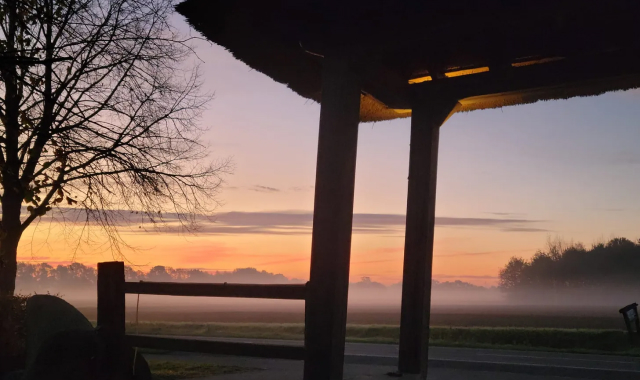Report from a Timeless Wisdom Training retreat in Germany with Thomas Hübl
By Matthew Green, Journalist
There’s a mystery I’ve experienced in the past week that I’d like to explore.
Riding the train home from Oldenburg in Lower Saxony, Germany, I feel a deep sense of calm. My inner landscape has expanded. Simply being in my body feels pleasurable in a way I’ve never known before. My mind is clear and supple, like it’s developed new muscles. I’m looking forward to getting home. And I’m also enjoying being here, moving through time and space, curious about what I find.
Thomas Hübl, who led the week-long retreat as part of the Timeless Wisdom Training I’ve just attended, often refers to our “inner architecture.” I don’t think he means our skeletons — at least not our literal skeletons. He’s pointing toward something more subtle — real, but unrecognised in the anatomy textbooks of the West. The phrase speaks to me more deeply now because I feel like my inner architecture has indeed been restructured. I’m reminded of those daytime home makeover shows, where the suburban family is whisked away for a week, then returns to find a team of builders and decorators has transformed their well-loved but shabby semi-detached into a sparkling ideal home.
What happened?
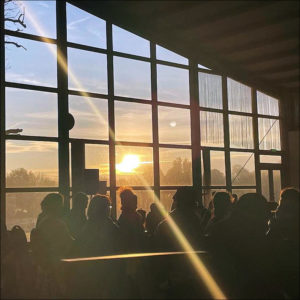 Ostensibly, about 200 people spent a week in a hall, sometimes listening, sometimes speaking, in large or smaller groups, often in threes. There were red cushions, chairs or mats to sit on, and an abundance of canary yellow blankets. The only tech was the audiovisual equipment and projector screens that enabled another 25 or so people scattered around the world to take part online.
Ostensibly, about 200 people spent a week in a hall, sometimes listening, sometimes speaking, in large or smaller groups, often in threes. There were red cushions, chairs or mats to sit on, and an abundance of canary yellow blankets. The only tech was the audiovisual equipment and projector screens that enabled another 25 or so people scattered around the world to take part online.
There was something more than just talking going on. And I want to try and articulate what that was.
Disarming the tripwires
As humans, we live behind barricades. In everyday circumstances, these defences feel so natural and normal that they operate outside of our conscious awareness. You can maybe sense these defences when you walk into a room filled with people who don’t know each other. There’s an unstated awkwardness; a subtle sense of unease. We may not be experiencing any overt hostility or real tension, but we feel guarded at some level, and we know deep down inside that we’re not one hundred percent safe. Frankly, these defences are so automatic and entrenched that they can be palpable even among groups of old friends.
What happens when you establish a greater degree of trust?
When you turn the sense-of-security dial up to eleven, so to speak?
That’s when the mystery begins to unfold.
Barking Dogs
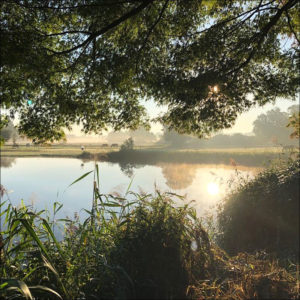 When we quieten down and start to relax, perhaps through the kinds of meditation and guided sessions of gentle movement practiced at the retreat, we naturally become more open and receptive. When we also feel confident in the facilitators, we start to consider their prompts for self-inquiry, and discover insights and emotions arising in us in response. We start to come into more direct contact with the pain we carry inside, but which is normally kept under lock and key, because it seems too much, or too shameful, to acknowledge — even to ourselves.
When we quieten down and start to relax, perhaps through the kinds of meditation and guided sessions of gentle movement practiced at the retreat, we naturally become more open and receptive. When we also feel confident in the facilitators, we start to consider their prompts for self-inquiry, and discover insights and emotions arising in us in response. We start to come into more direct contact with the pain we carry inside, but which is normally kept under lock and key, because it seems too much, or too shameful, to acknowledge — even to ourselves.
So often, we weren’t able to speak about our painful experiences in a way that would be received, honoured and held because it wasn’t safe for us to do so. Shutting down was an intelligent response, as Thomas Hübl often emphasises. But that intelligent, protective mechanism can become stuck. And that means the emotional residue of the original trauma stays frozen in our system — clouding our perceptions of situations and people, and locking us in to repetitive patterns of behaviour for reasons we don’t fully understand. Despite our best intentions, unless we can uncover and release these patterns from our body, it can be very hard to change, and the past becomes our future.
The kicker is that we may not even realise that it’s trauma that’s causing us to act the way we do. And neither do the people who might be hurt by our behaviours. To quote Thomas again, all the dysfunction we experience and perpetuate just seems to be “how life is.” That’s true for us as individuals, and for society as a whole.
But there’s another option.
When a sufficient degree of safety has been established, the secret voices of the past begin to clamour for our attention. (Dallas Gudgell calls these unloved parts of ourselves “the barking dogs” — as if we’re at last starting to hear their distant howls.) There will be echoes of “Big T” traumas — war; racism; slavery; the Holocaust — and many other monumental collective transgressions alive in the room. But the “Little T” traumas of missing out on what we needed and deserved growing up can profoundly shape our experience in a different way. It could be the legacy of abuse, neglect or abandonment. Or it could be the pain so many of us carry of never having felt fully seen as children — a wound that’s barely recognised in modern culture, but which can colour all of our days.
Resonance and release
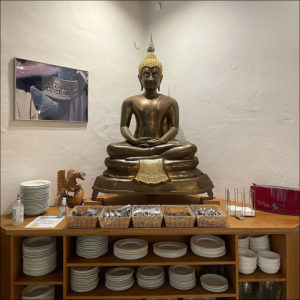 As we allow this traumatic material into our awareness, the trapped emotions begin to arise and discharge — often through deep breaths, gentle shaking, and most likely tears. (I’ve probably cried more in the past week than the past five years). Fear, anger, sadness — and eventually the joy and humour that go with self-emancipation from the past — are all welcome participants in the process too.
As we allow this traumatic material into our awareness, the trapped emotions begin to arise and discharge — often through deep breaths, gentle shaking, and most likely tears. (I’ve probably cried more in the past week than the past five years). Fear, anger, sadness — and eventually the joy and humour that go with self-emancipation from the past — are all welcome participants in the process too.
When these individual processes are empathically witnessed by the entire group of more than 200 people, a new element arises. We connect with our natural emotional resonance with one another. Like tuning forks, we respond to notes of a similar frequency to our own.
I find this part of the experience quite hard to convey, so let me slow this down a little.
Emotional signature
At the most basic level, we can probably all relate to feeling moved by watching a great film. Our lives may look very different to those portrayed on the screen, but the themes somehow touch something deep inside of us.
Collective healing work has echoes of this — but is way more intense. You’re in the room (or online) with a real person coming into contact with their deepest hurt, right in front of you. That’s already powerful. But it’s not so much that we feel sympathy for the other person, like: “Oh dear, isn’t that awful, how terrible.” No, in many cases — and it will always be more true for some individual processes than others — we will feel our own suppressed emotions arising in response.
Let’s take a hypothetical example (to respect the confidentiality of participants).
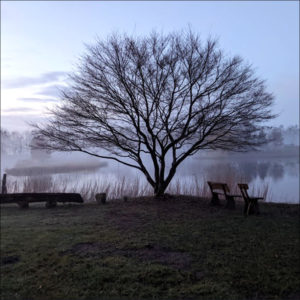 Say somebody is experiencing an upwelling of deep sadness over a difficult relationship with a parent, and I’d gone through something like that in my own childhood. I will feel moved by witnessing the other person coming safely back into contact with that root pain, and letting it gently discharge. That’s not because I experienced exactly the same story, or circumstances. It’s because the emotional signature I can feel coming alive in the other person also lives in me — and it’s coming alive in response, because it also wants to complete and dissolve.
Say somebody is experiencing an upwelling of deep sadness over a difficult relationship with a parent, and I’d gone through something like that in my own childhood. I will feel moved by witnessing the other person coming safely back into contact with that root pain, and letting it gently discharge. That’s not because I experienced exactly the same story, or circumstances. It’s because the emotional signature I can feel coming alive in the other person also lives in me — and it’s coming alive in response, because it also wants to complete and dissolve.
It may be a sign of my habitual weddedness to our dominant scientific paradigm — which privileges data gathered through sophisticated equipment over direct experience — but I can’t help asking what would happen if we could invent some kind of scanning device so we could literally watch this process unfolding on a screen. I envisage an infrared-style “Emotional Processing Detector” showing silhouettes of the people in the room, with white heat spots bubbling up in bellies, hearts and throats as the emotions start to rise and release. We could reveal the resonance rippling through the room. This could evolve into a unique new form of art — a kaleidoscope expression of collective healing to be celebrated and shared.
Fortunately, we already have such scanners wired into our nervous systems — only they’ve mostly fallen out of use. If we make an effort to reclaim our subtle perception, we can perceive the flow of resonance with greater granularity, precision and depth.
I’ve seen and experienced this over and over again in the past week at the retreat centre at Oberlethe in Northern Germany. Even as I write these words, I feel in awe of what it felt like to encounter the fundamental truth of our connectedness as humans. That capacity to weave and resonate together can seem so remote in daily life — or when watching the news. But when we take a few days to slow down and tune in, it’s clear that supporting each other to heal isn’t just a potential we carry — it’s our collective birthright.
Two Little Ducks
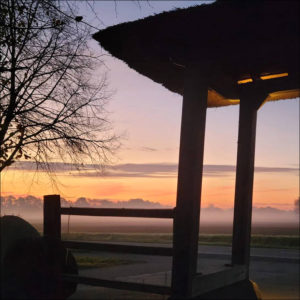 This can all sound like heavy stuff, so let’s maybe approach this in a slightly more playful way. (And if anyone thinks that what I’m about to write is trivialising trauma work, I’d like to clarify that one of the goals of Resonant World (my blog) is to experiment with idiom and metaphor, in the hope of finding new language to reach new audiences. I’m going to take risks and I’m going to fail — maybe a lot. Thank you for bearing with me.)
This can all sound like heavy stuff, so let’s maybe approach this in a slightly more playful way. (And if anyone thinks that what I’m about to write is trivialising trauma work, I’d like to clarify that one of the goals of Resonant World (my blog) is to experiment with idiom and metaphor, in the hope of finding new language to reach new audiences. I’m going to take risks and I’m going to fail — maybe a lot. Thank you for bearing with me.)
So everyone in Britain knows that Bingo is a game played by older people in our crumbling seaside resorts. It works like this: Everyone collects a Bingo card, stamped with random numbers assigned in a grid pattern, as they walk into the Bingo Hall. A Bingo machine spits out numbered balls, and a figure known as a “caller” calls out these random numbers. (Certain numbers have nicknames — such as “Two Little Ducks: 22.”) If you have one of the numbers printed on your Bingo card in the right column, you cross the number off. The game continues. If you cross off five numbers in a row on your card, you stand up and shout “Bingo!” I have limited experience of Bingo but I assume that the sheer exhilaration of standing up and bellowing a word as robustly satisfying as “Bingo” is probably a greater reward than the prizes on offer.
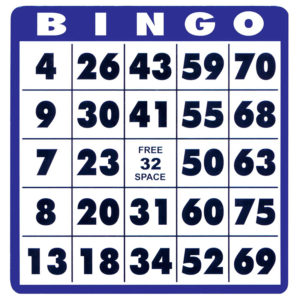 There’s an almost infinite combination of ways the numbers can be printed on the Bingo cards, which means it’s highly unlikely that any two cards will be identical. But neither are the cards entirely unique: We will always find other people who have some of the same numbers printed in the equivalent squares to our own.
There’s an almost infinite combination of ways the numbers can be printed on the Bingo cards, which means it’s highly unlikely that any two cards will be identical. But neither are the cards entirely unique: We will always find other people who have some of the same numbers printed in the equivalent squares to our own.
In collective trauma work, we all arrive in the room with our own Bingo card of traumatic imprints — from our own lives, our ancestors, and our communities and cultures. Although there’s no numbers involved in our Trauma Bingo, the matching principle is equally precise: The emotions, and most likely tears, you feel in response to certain processes you witness tell you that what’s happening in the other is also happening in you.
In this way, the power of healing work is exponentially amplified. A process that might have taken place one-on-one with a therapist in other circumstances can precipitate equivalent healing for many other people, whether they are physically present or watching online. As more and more layers begin to release in individuals, this translates into a very different quality of connection in the group as a whole.
More than that: It starts to feel as if there’s a subtle orchestration at work that’s guiding the process from a place beyond the conscious awareness of any of us — including the facilitators. I think this is what Thomas means by “collective intelligence.” And it felt very palpable in Oberlethe this last week.
Walking questions
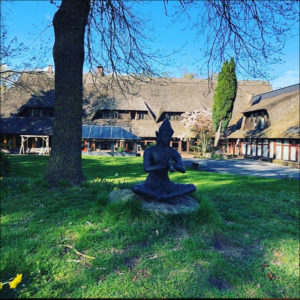 Even as the retreat plunged us into a face-to-face encounter with epic, archetypal themes informing the human condition, it’s the simplicity at the core of the whole process that stands out most for me. It turns out that all humans need to heal a lot of what weighs us down is each other. I recalled a phrase I’ve heard used by the Alaskan Unangan elder Ilarion Merculieff: “We are the ones we’ve been waiting for.” For me, this past week cast this expression into a new light. It also means that deep healing can happen in batches (unless anyone has a better term). And that’s big.
Even as the retreat plunged us into a face-to-face encounter with epic, archetypal themes informing the human condition, it’s the simplicity at the core of the whole process that stands out most for me. It turns out that all humans need to heal a lot of what weighs us down is each other. I recalled a phrase I’ve heard used by the Alaskan Unangan elder Ilarion Merculieff: “We are the ones we’ve been waiting for.” For me, this past week cast this expression into a new light. It also means that deep healing can happen in batches (unless anyone has a better term). And that’s big.
Certainly, this work requires highly experienced facilitators with impeccable integrity. Badly-run or exploitative groups can cause a lot of harm. But the fact that collective healing is possible is, at least to my mind, an expression of pure grace.
This realisation leaves me asking: Why aren’t more people doing collective healing work like this everywhere, regularly, on a rolling basis? And if they did, how would that practice change the tenor of society as a whole?
After seeing what’s possible, I think those are questions worth our time.
Matthew Green
Thanks Matthew for this report!
This article was first published on Matthews Blog “Resonant World”
More information about the Timeless Wisdom Training you can find here
